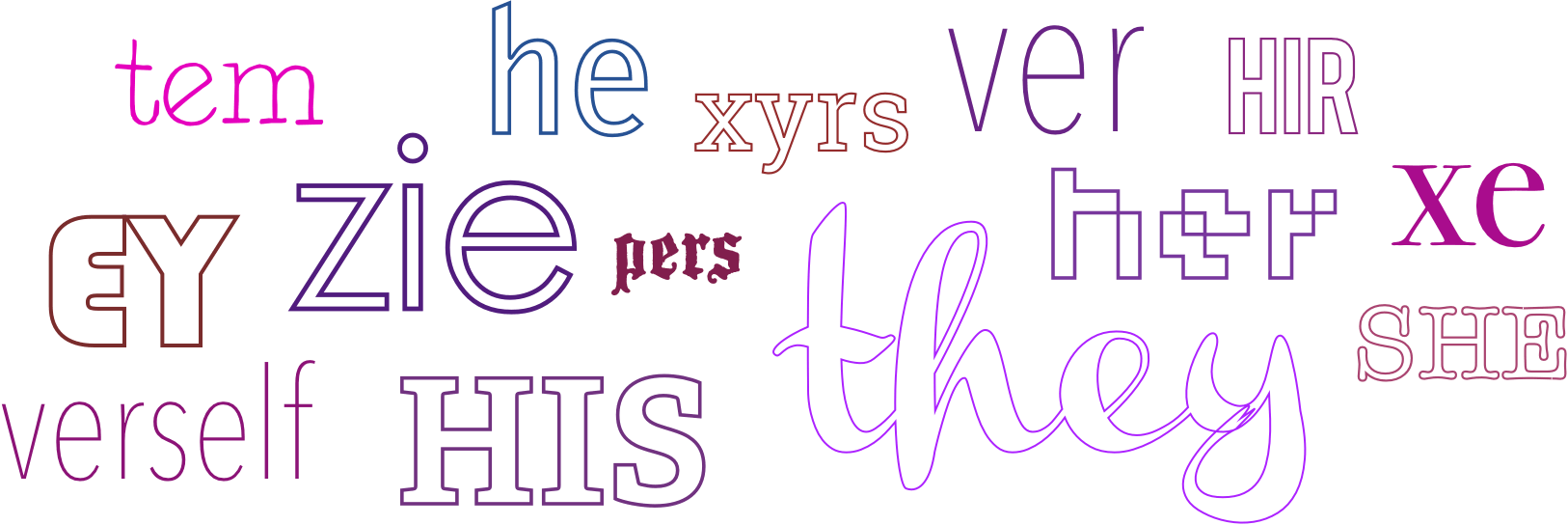Gender Identity & Sexual Orientation
Many people have questions about gender identity and sexual orientation. Learn more here about gender, what it means to be LGBTQ+, where to find resources in Chicago, and how you can be a supportive ally. It’s important to note that language is always changing. It’s always important to ask others how they want to be identified.
What does LGBTQ+ stand for?
Lesbian, Gay, Bisexual, Transgender, and Questioning (or Queer). + recognizes there are even more ways for a person to identity than are included in this acronym.
Understanding Sex, Gender Identity, Gender Expression, & Sexual Orientation
Gender and sex are often thought of as the same, but they are different. Many people think that the sex you are born with defines the gender you identify with, but there are many ways a person can choose to identify. Gender is more than the “parts” that you were born with. Gender isn’t just male or female. And it can be expressed in different ways.
The same can be said for sexual orientation. Your sexual orientation, or whoever you’re attracted to physically, emotionally, or romantically, can be more than gay or straight. Check out the LGBTQ+ Glossary for helpful information.
Below are key aspects of your sex, gender identity, gender expression & sexual orientation. Click here for more terms related to the LGBTQ community. Remember, these terms can be defined in various ways, and the most important thing is how you identify—not how someone labels you. These are just some of the ways people identify. There are many ways to identify.
Usually assigned at birth by a doctor. Combination of chromosomes, hormones, internal and external reproductive organs.
Male
A label given to someone at birth by a medical professional, based on the presence of a penis, testicles, and/or scrotum and/or X and Y chromosomes.
Female
A label given to someone at birth by a medical professional, generally based on the presence of a vulva, vagina, uterus and/or ovaries and/or X chromosomes.
Intersex
A general term used for a variety of conditions in which a person is born with a reproductive or sexual anatomy, chromosomal makeup, or hormonal pattern that cannot be readily assigned a label of female or male.
Your innermost concept of self as “male” or “female”—or somewhere in between. What we perceive and call ourselves.
Transgender or Trans
An umbrella term for people whose gender identity differs from the sex they were assigned at birth. Transgender people may or may not alter their bodies hormonally or surgically, but it’s important to know that being transgender is not dependent upon medical procedures.
Cisgender or Cis
Gender identity that is consistent with the sex they were assigned at birth.
Nonbinary
These terms refer to individuals whose gender expression does not follow social expectations or stereotypes based on their sex assigned at birth (Other terms might be used, such a gender nonconforming, genderfluid, genderqueer, polygender, bigender, demigender, or agender).
Two-Spirit
A term created by First Nations/Native American/Indigenous peoples whose sexual orientation and/or gender/sex exists in ways that challenge colonial constructions of a gender binary.
Gender expression is the way in which you present or express your gender. Gender perception is the way other people perceive your gender expression. Gender norms, how we assume people might identify or act based on perceived gender, impacts how we perceive someone’s gender. The way in which a person acts to communicate their gender identity is different for everyone. For example, one’s name, preferred gender pronoun, behavior, clothing, communication style and interests.
Masculine
Expressing one’s gender through appearance, name, and/or mannerisms that are consistent with common understandings of masculinity, regardless of gender identity or sexual orientation.
Feminine
Expressing one’s gender through appearance, name, and/or mannerisms that are consistent with common understandings of femininity, regardless of gender identity or sexual orientation.
Androgynous
Expressing one’s gender through appearance, name, and/or mannerisms that are not associated with masculinity or femininity, regardless of gender identity or sexual orientation.
Refers to the sex of those to whom one is physically, emotionally or romantically attracted.
Heterosexual
People who are attracted to people of the opposite sex. (aka. straight)
Bisexual
People who are attracted to people of the same or another gender.
Gay
People who are attracted to people of the same gender
Lesbian
A woman who is attracted to other women. Sometimes preferred over “gay.”
Asexual
An identity term to describe a person who may not experience romantic and/or sexual attraction.
Questioning
Someone trying to figure out their sexual orientation and/or gender identity.

There Are Many Ways That a Person Can Identify
It is important to respect a person’s identity by using their preferred gender pronouns. Some people might prefer to be identified with masculine or feminine pronouns, such as “he, him, his,” or “she, her, hers.” Other people might prefer to be identified by terms that are more gender neutral such as “they, their, theirs.” Some people are okay with any pronouns as long as they are respectful. Unsure of someone’s pronouns? Politely ask them if they have a preference.
Watch a Youtube video about pronouns and how to use them (video).
Gender Pronouns
Resources on Personal Pronouns
Practice with Pronouns — Pronoun Selection
The Gender Unicorn
Gender identity, gender expression, as well as physical and emotional attraction exist as a spectrum for each person. You can use the Gender Unicorn to help illustrate your own gender identity. Here is an example of how someone has filled out their Gender Unicorn.
Download your own and print here.
Gender Norms & Gender-Based Violence
What you may not know is that there is a link between gender norms and unhealthy relationships and unsafe sex (e.g., not using condoms or birth control). From a young age, we may be taught that we should look or act a certain way because of the sex (male or female) we are assigned at birth. Gender norms tell us that males should be masculine and females should be feminine. Many people think of femininity as a combination of being delicate, a caretaker, and attractive; while they understand masculinity as a combination of being strong, emotionally tough, aggressive, and sexual. These expectations are called gender norms. Gender norms are not inclusive of the fluid range of identities people hold and gender norms can lead to gender-based violence. Learn more about gender norms below and learn about gender-based violence here.
Taking Care of Yourself
You matter, and it’s important to know how to take care of yourself. Identifying as LGTBQ+ can have special challenges, but there are lots of people out there who support you and want to help. Look below to find information for coming out, transitioning your gender, how to be an ally. Go to the Help & Clinics page to find additional support and how to get help if you’re having trouble.
Be an Ally
An ally is someone who is supportive of others, respects everyone and stands up to bullies. This can be especially important for LGBTQ+ individuals. Not only do allies provide support to their LGBTQ+ peers, they also help others understand the importance of equality, fairness, acceptance and mutual respect for everyone.
